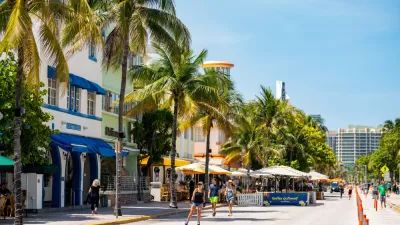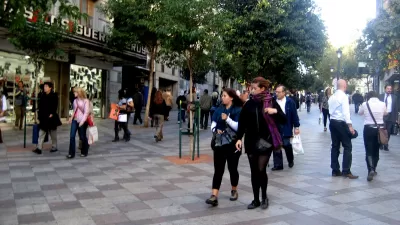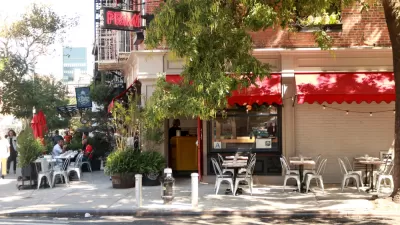Forget razor blades in apples. Henry Grabar argues the biggest threat on Halloween is much more mundane.

In an op-ed for Slate, Henry Grabar uses the annual parent panic over Halloween dangers to highlight another very real and present danger to children: cars. A CDC study showed that children are four times more likely to be killed on Halloween than on any other day.
According to an analysis in the Washington Post, 54 kids were killed by cars on Halloween between 2004 and 2018, making it by far the deadliest day of the year; no other day of the year saw more than 30 deaths across those 15 years, and most saw far less.
Grabar notes that the chance of getting struck by a car is still small, and “no more reason to keep a kid at home on All Hallows’ Eve than fear of fentanyl-flavored Skittles.” But the sharp increase in risk still warrants action, this year in particular. Grabar explains this is in part because “this Halloween falls during a historic surge in bad driving.” On top of that, pandemic-era open streets programs and other experiments with opening up more space to pedestrians have primed cities for changes.
Grabar argues for making Halloween a ‘slow driving’ day, “with trick-or-treat destinations closed to traffic, and everyone else on high alert.” Pointing out that children are known to “have a sixth sense for good design, such as generous lighting, a walkable urban fabric, calm streets, and sidewalk-facing architecture, that adults sometimes struggle to enumerate,” Grabar believes the “trick-or-treat test” should be applied to more of our streets, year-round.
FULL STORY: Ban Cars on Halloween

Alabama: Trump Terminates Settlements for Black Communities Harmed By Raw Sewage
Trump deemed the landmark civil rights agreement “illegal DEI and environmental justice policy.”

Planetizen Federal Action Tracker
A weekly monitor of how Trump’s orders and actions are impacting planners and planning in America.

The 120 Year Old Tiny Home Villages That Sheltered San Francisco’s Earthquake Refugees
More than a century ago, San Francisco mobilized to house thousands of residents displaced by the 1906 earthquake. Could their strategy offer a model for the present?

In Both Crashes and Crime, Public Transportation is Far Safer than Driving
Contrary to popular assumptions, public transportation has far lower crash and crime rates than automobile travel. For safer communities, improve and encourage transit travel.

Report: Zoning Reforms Should Complement Nashville’s Ambitious Transit Plan
Without reform, restrictive zoning codes will limit the impact of the city’s planned transit expansion and could exclude some of the residents who depend on transit the most.

Judge Orders Release of Frozen IRA, IIJA Funding
The decision is a victory for environmental groups who charged that freezing funds for critical infrastructure and disaster response programs caused “real and irreparable harm” to communities.
Urban Design for Planners 1: Software Tools
This six-course series explores essential urban design concepts using open source software and equips planners with the tools they need to participate fully in the urban design process.
Planning for Universal Design
Learn the tools for implementing Universal Design in planning regulations.
Clanton & Associates, Inc.
Jessamine County Fiscal Court
Institute for Housing and Urban Development Studies (IHS)
City of Grandview
Harvard GSD Executive Education
Toledo-Lucas County Plan Commissions
Salt Lake City
NYU Wagner Graduate School of Public Service





























